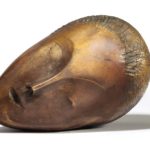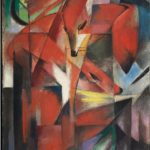BALTIMORE.- Michelangelo, the 16th century master painter and accomplished anatomist, appears to have hidden an image of the brainstem and spinal cord in a depiction of God in the Sistine Chapel’s ceiling, a new study by Johns Hopkins researchers reports. These findings by a neurosurgeon and a medical illustrator, published in the May Neurosurgery, may explain long controversial and unusual features of one of the frescoes’ figures. Michelangelo is known to have dissected numerous cadavers starting in his teenage years, these anatomic studies aiding him in creating extremely accurate depictions of the human figure in his sculptures and paintings, notably the statue of David in Florence and paintings of God and other figures from the Book of Genesis in the Vatican’s Sistine Chapel in Rome. Â Although the vast majority of subjects in this painting are considered anatomically correct, art historians and scholars have long debated the meaning
Brainstem, Spinal Cord Images Hidden in Michelangelo’s Sistine Chapel Fresco
Back To Top







